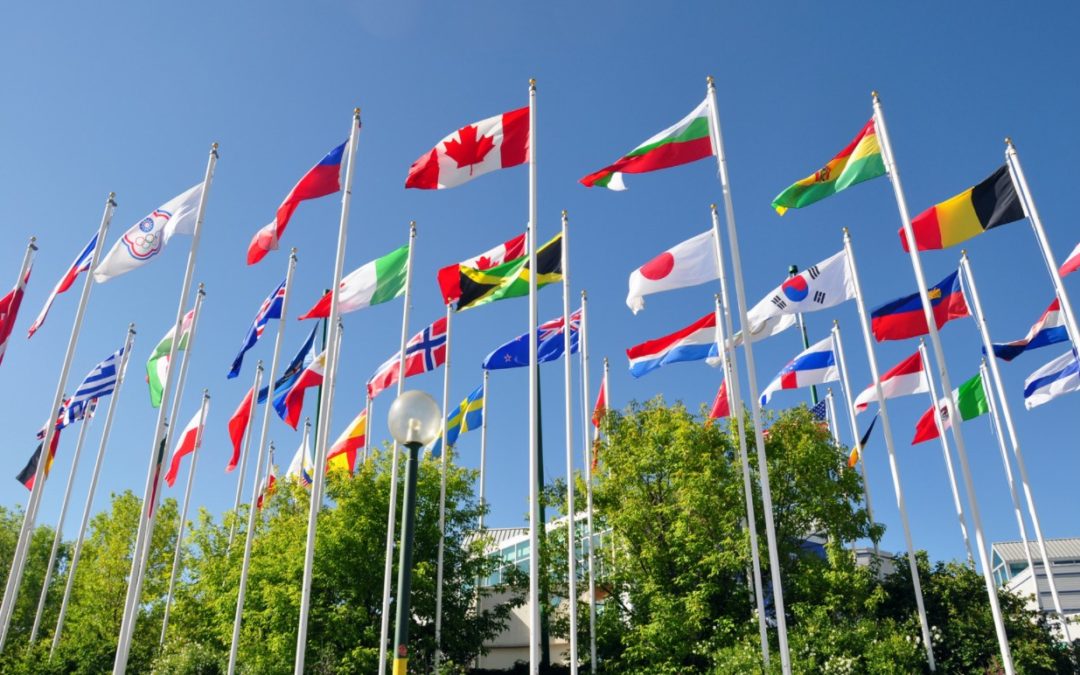Adding a moderate amount of international stocks to your portfolio can help both reduce volatility and enhance returns.
One of the most common objections I hear from new clients when walking them through my portfolio recommendations is why the need for international diversification. Many are frightened by what they read in the news about various geopolitical hotspots around the world, and worry about increased risk in their portfolio. The term for this is “home bias”, which is the tendency to invest in familiar markets and avoid investing in unfamiliar markets.
My goal is not to invalidate this anxiety but to lay out the facts to try to help them understand why exposure to foreign markets may be in their best interest over the long term.
Using International to Optimize Risk-Adjusted Return in a Portfolio
For background context, whenever I construct tailored portfolios for clients, one of my overarching goals is to optimize the risk-return relationship of the portfolio – in other words, I want to get the most return for a given level of risk.
I think of it kind of a like a tube of toothpaste: whether it is a conservative, moderate, or aggressive portfolio, I just want to make sure we’re squeezing out every last drop of return for each increment of risk being taken on in that portfolio. And the way you do this is by maximizing diversification, minimizing costs (including tax minimization), rebalancing regularly, etc.
This is where international diversification comes in.
International Investments Increase Portfolio Diversification
Just looking at equities for the moment, there is no question that non-US stocks exhibit greater volatility than domestic stocks – the data bear that out. However, international returns are not perfectly correlated with domestic returns, so when you add foreign stocks to a portfolio with domestic stocks, some of that international volatility offsets some of the domestic volatility, leaving you with lower overall volatility.
When I first started studying finance, I remember how counterintuitive this seemed: you mean to tell me that by adding a riskier asset to a portfolio, you actually lower the overall risk of the portfolio?! It is counterintuitive, yes, but this is the magic of diversification! And the name of the game is to maximize that diversification benefit so you get the most bang for your investment buck.
Think about it like this: if you’re limiting your universe of investable securities to just publicly-traded companies domiciled in the U.S., you’re automatically far away from the target of maximizing diversification. There are over ten thousand publicly traded stocks globally, only ~3,500 of which are domiciled in the U.S. There are many companies’ products with which you come into contact every day that you have no exposure to if you’re limiting your investments to U.S. stocks (think Toyota, Honda, Samsung, Nestle, etc.). That leaves a lot of diversification benefit on the table!
All of this begs the question – what is the optimal amount of international diversification to have in a portfolio?
Some international exposure in a portfolio can help reduce overall portfolio volatility, but too much actually increases volatility (because international is more volatile than domestic). Research shows that the optimal allocation to international is between 30% and 40% of a portfolio; this is the sweet spot where you maximize the international diversification benefit, so this is always my lead recommendation with clients’ portfolios.
But, if you ultimately can’t wrap your mind around having this much international exposure, even 15% or 20% will help; you’re not maximizing the international diversification benefit at this level, but you’re at least getting quite a bit of it.
International Investments Can Help Enhance Returns
So, the primary purpose of international exposure in a portfolio is for diversification purposes, but a nice cherry on top is the fact that international stocks are expected by many market forecasters to outperform domestic stocks going forward.
If you look at the historical data, there is a cyclical nature to this, where international stocks outperform domestic stocks for a period of time, and then underperform domestic for a stretch. We have been in an extended leg of the cycle, really since the Great Recession in 2008/2009, where international stocks have underperformed (which has certainly contributed to the fact that many U.S. investors are reluctant to invest internationally).
But the point I would emphasize is that this trend CANNOT continue forever, because in cyclical relationships you always have a reversion to the mean.
In other words, at some point, investors start to look around and realize that, because international stocks have underperformed domestic for over a decade now, they are actually “on sale” relative to domestic stocks: their valuations are much more favorable for future returns. This induces a flow of capital into international markets to take advantage of the imbalance, which drives up the prices of those international stocks, causing their returns to outperform domestic stocks. This goes on for some time until the situation reverses, and this cycle plays out over and over again.
Caution Against Market-Timing
So, the inflection point where international stocks start to outperform domestic stocks will happen at some point (Vanguard’s economists project that international stocks will outperform domestic stocks by an average of ~3% annually over the next 10 years!), but I would strongly caution you against trying to time the markets on this.
Many market-timing investors thought 2017 was the inflection point – because international stocks significantly outperformed domestic stocks in 2017 – and positioned their portfolios with an international overweight to ride the wave, only to get burned when international stocks came crashing back down to the underperformance trend in the years following.
This is why I always emphasize diversification when it comes to international investing, as opposed to chasing returns. International diversification will pay off in your portfolio over the long term when this inflection finally does happen, but it requires patience to stay the course until then.
The Takeaway
There is art and science to constructing a portfolio that performs optimally over the long term, but many do-it-yourself investors succumb to behavioral biases that prevent them from building their portfolios with this optimization in mind; international diversification is one prominent example.
If you want some help with this or would benefit from a deeper discussion with an investment professional, click on the “Free Consultation” button to schedule time for us.

